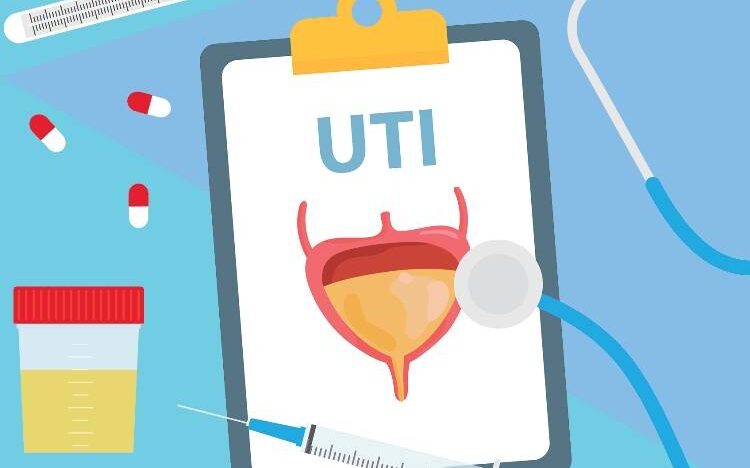A UTI or Urinary Tract Infections is when bacteria get into your urine and travels up to your bladder. UTIs cause more than 8.1 million visits to health care providers each year. At least 60% of women and 12% of men will have at least one UTI during their lifetime.
Normal urine has no bacteria in it, and the one-way flow helps prevent infections. Still, bacteria may get into the urine through the urethra and travel up into the bladder.
SYMPTOMS OF URINARY TRACT INFECTION(UTI)
• A strong, persistent urge to urinate
• When urinating, there is a burning sensation.
• Passing frequent, small amounts of urine
• Urine that appears cloudy
• urine that appears red, bright pink.
• Strong-smelling urine
• Pelvic pain, in women, — especially in the center of the pelvis and around the area of the pubic bone.
Symptoms of an upper tract urinary infection in men are similar to those in women. However, men with a lower tract UTI may sometimes also experience rectal pain.
Women with a lower tract urinary infection may experience pelvic pain. This is in addition to the other common symptoms.
These risk factors include:
• age (older people are more likely to get UTIs.)
• reduced mobility after surgery or prolonged bed rest.
• Persistent use of urinary catheters may make it easier for bacteria to get into your bladder.
abnormally developed urinary structures from birth.
• Weak immune System
Treatment of a UTI depends on whether it’s:
• Bacterial (the most common type)
• Viral
• Fungal
The treatments include antibiotics, antivirals (usually cidofovir is used to treat viral UTIs) and antifungals.
Microscopic ligation of varicocele:
A varicocelectomy is the most common procedure performed to correct issues with varicoceles. With microscopic varicocele surgery, a high-powered surgical microscope is used to perform the operation. This type of surgery allows for a better view of the affected area.
Varicocelectomy is a safe procedure that has a high chance of improving your fertility and reducing complications of blocked blood flow into your reproductive organs. As with any surgery, there are some risks, and this procedure may not be able to fully restore your fertility.
The spermatic cord is dissected to access the abnormal veins, which are sealed or tied. Blood flow is then redirected away from the affected area and diverted to the pelvis or inner thigh.
Any surgery has some risk, such as bleeding and/or infection at the incision site. But there are also some major complications specific to varicocele surgery that you should be aware of:
Varicocele recurrence can be due to incomplete blockage of the veins that are causing the varicocele. This may result in persistent symptoms and problems with fertility.
Hydrocele formation, or a collection of fluid in or around the scrotum, results from the disruption of the lymphatic flow. Hydroceles can become large and cause pressure in the scrotum. Rarely, one can rupture. Surgery or drainage may be needed to correct a hydrocele.
Testicular artery ligation, or the accidental tying off of the blood flow to the testicle, can occur with some surgical approaches. There are concerns that this may result in testicular atrophy and decreased testicular function, such as lower testosterone levels and decreased sperm quality.


